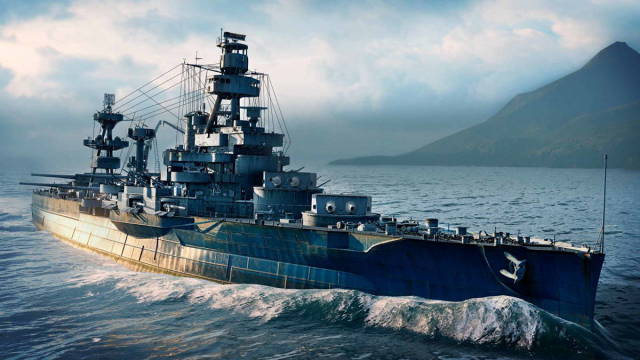Large warships (Capital Ships), as a rule, can operate autonomously for at least a certain time. The defeat of such a ship, according to some experts, signals the likely defeat of the entire fleet.
Your attention is invited to the article “Large warships. Current projects” (Grosse Kampfschiffe. Aktuelle Vorhaben), published in the journal “Europäische Sicherheit & Technik”. The author Bob NUGENT (Bob NUGENT), a former naval officer, and now a practicing scientist and teacher at the Busch School of Business of the Catholic University of America, (Busch School of Business der Catholic University of America, Washington, DC), examines the topic based on the materials of the international consulting company AMI International.
Large warships. Current projects
What are large warships? Does this term make sense in the practice of using modern naval forces? While the term returns to the beginning of the 20th century, to the strategic concept of a naval confrontation between almost equivalent opponents (Near Peer), in parallel, the growth of the construction of a new generation of large warships in the modern maritime era acquires a new meaning.
The term "large warship" (Capital Ship) is relatively new in the history of naval warfare. John KEEGAN notes that it was first used in 1909 and mainly refers to battleships. Since these ships represented the most resistant and largest platforms in the leading fleets of the time, the term became fashionable, like the term "first-class", which was used by the royal and other Navies to describe the largest and most powerful (in terms of armament) battleships of the late 19th century. In naval contracts of the 1920s and 1930s before World War II, the term was used to describe surface warships in size and armament. In this case, large warships were formally defined as battleships and battlecruisers with large-caliber guns and heavy armor protection and a displacement of more than 20,000 tons.
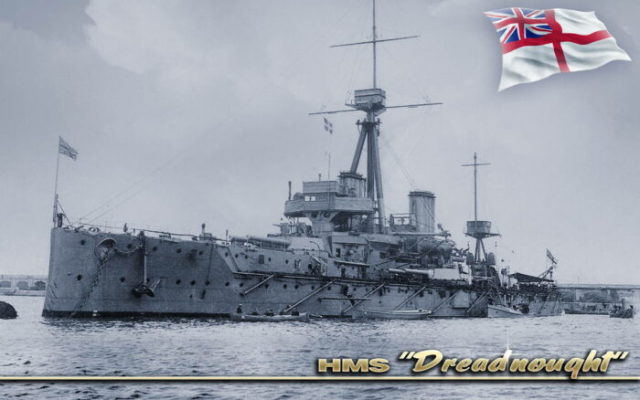
Battleship of the Royal Navy of Great Britain "Dreadnought"
After the Second World War, the term is usually used to describe aircraft carriers and later nuclear submarines that visibly surpass a battleship in both displacement and/or power. A functional definition of the term appears from time to time, and only to extend the concept to the most important naval warships, as well as to the largest warships, especially in comparison with other large warships and other naval structures.
William LIND defined in 1986 a large warship from an operational and relational point of view as a naval ship, which, in case of its defeat, immediately signals the defeat of these Navies. In this context, a large warship is at least capable of operating independently for a certain period of time, even if the rest of the fleet is defeated or neutralized. In addition, the purpose of a large warship is to defeat other large ships, which, according to Mahan's definition, return the leading role of any Navy, consisting in entering into battle and defeating other fleets.
Students of the 21st century naval academies also use the definition of mission and functions to describe large warships. In this context, the term can have a negative meaning, especially in the case of criticism of aircraft carriers, which are considered both vulnerable and obsolete, like their predecessors.
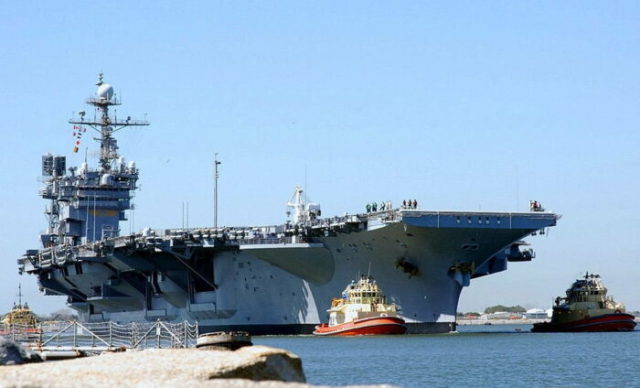
US Navy aircraft carrier USS "John F. Kennedy"
Functional features
Against this background, however, the most recent functional descriptions of large ships as the main units of the Navy offer a number of useful functions that distinguish them from other types of ships and for which they are at least capable:
- ensuring the protection of trade routes;
- control of the marine zone within a certain region;
- destruction of warships of enemy naval forces;
- demonstration of the visible readiness and ability of the nation to fight and win at sea, whether in limited peacetime or in war.
This article uses a broad definition of “large warship” (Capital Ship), which combines both size and functionality. Large warships are the largest and most powerful surface ships of a certain fleet. They are able to participate in a variety of missions in which they protect trade routes and, above all, control the maritime area. Thus replacing large, but specialized ships such as amphibious and transport vessels, as well as small patrol and combat boats that do not have the necessary autonomy to provide a wider range of tasks.
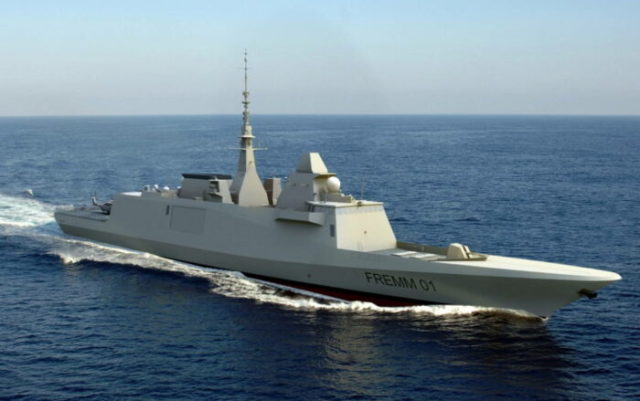
French Navy URO frigate of the Fremm type
This definition expands the term and makes it relative. For some Navies, it applies to frigates and types of ships, which in other larger fleets are defined as escort ships, reconnaissance or auxiliary vessels. He also more ironically and perhaps literally conveys the position that needs to be taken: the program of a large warship includes the largest part of the Navy's procurement budget. Capital ships require the lion's share of the investments of the fleet or the country.
A submarine (PL) can also be considered a large warship, both in terms of efficiency, as well as the amount of resources that are in a certain naval structure. However, historically, the submarine has not been considered a means determined to control the maritime area, as long as it fulfills symbolic criteria as the most visible and impressive proof of the will of the nation to assert national authority at sea. Accordingly, this article does not include submarines in the estimated large ship programs. (However, below the author examines the PL in this article! Approx. “IVi")
Naval structures
This article is based on AMI International's private database of current and planned offshore investment markets, covering more than 150 navies worldwide. First, today's fleet structures will be considered to determine which navies build and operate aircraft carriers, cruisers, destroyers and frigates and in what proportion (to the total number of ships) these large types of ships are present in the entire structure of the fleet.
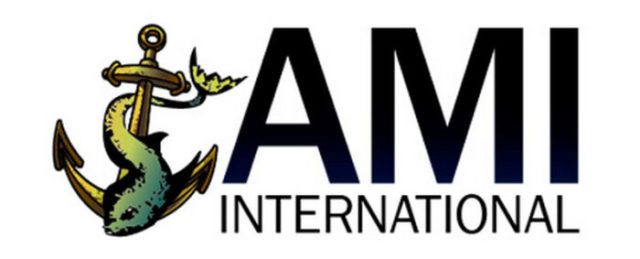
AMI International Company. Logo.
This will be followed by a look at the future of a large warship, starting with an overview of the construction of such ships in the world, followed by a regional overview of the most important projects currently under construction or planned over the next 20 years.
This analysis includes the frigate as a large warship, since this class of ship is often the largest and most powerful platform (not to mention the most expensive) that can be found in many Navies around the world.
Table 1
Aircraft carriers Landing ships Support ships Corvettes Cruisers Destroyers Combat boats Frigates Minesweepers Cor.coast.ohr. Patrol.boats Subv.boats Total Asia and Australia 3 448 349 2 168 192 1957 165 4090 Caribbean islands and Lat.America 1 110 136 28 22 44 6 60 872 25 1304 Bl.East and Sev.Africa 142 75 48 2 214 26 29 31 834 43 1444 NATO (without USA) 3 217 504 46 19 83 128 191 86 969 84 2330 Europe (without NATO) 113 74 11 23 3 35 14 121 5 399 Russia 1 55 271 30 4 14 111 20 45 39 237 62 889 Black Africa 27 17 1 12 7 5 16 236 3 324 USA 11 203 148 22 68 13 11 37 185 69 767 Total 19 1315 1574 317 28 195 853 414 490 475 5411 456 11547*The modern ship market. Navy and Coast Guard ships
153
92 388 173
*This table does not include approximately 1,845 patrol boats operated by small coastal maritime states like North Korea. On the other hand, China and Russia are being considered to take into account global needs.
Analysis by region
Table 1 shows AMI data on ships currently operating in the Navy, Coast Guard and other maritime services around the world. With regard to large ships, there are two points in the table: a large warship represents very narrow top structures of fleets around the world. Aircraft carriers, cruisers, destroyers and frigates make up a small part of the global fleet in relation to the total number of ships: a meager six percent of all ships in operation.
The number of large warships used by the Navy varies greatly depending on the region. The United States still has the largest navy in the world with a share of about 14 percent of the large warships of the total number of ships in service (and perhaps twice as much if you take into account only the Navy, without the coast Guard and agencies that also use ships). The US continues to operate the largest aircraft carriers in the world (60 percent) and still a large percentage of destroyers (almost 80 percent).
They are followed by the Navies of NATO countries (excluding the United States) and the Asia-Pacific region, with each group showing a similar weight of large ships in their naval structures – about six percent. Perhaps it is illogical that in a region that mentions the expansion of the Chinese and Indian fleets with large surface warships, both countries remain strongly focused on frigates as the main type of warships. In the Asia-Pacific region, frigates account for almost 60 percent of large warships. NATO has an even higher percentage overall, as more than 85 percent of large warships are frigates.
Russia has an interesting alternative approach to the construction of capital ships. The Russian Navy demonstrates a strong continuity from the structure of the Soviet Navy during the Cold War. In fact, most of today's Russians (read “Russian", approx. “IVi") large ships were built during the Cold War, and cruisers and destroyers make up a much larger part of the Russian Navy than any other fleet, excluding the United States. In general, large surface ships make up about four percent of the current structure of the Russian Navy.
However, Russia also provides the strongest argument for considering submarines as large warships, since submarines make up six percent of the total number of ships of the Russian navy, which are the second largest after the United States. Taken together, Russian large ships and submarines make up eleven percent of the fleet structure (a similar value for the United States lies within 23 percent). These figures clearly indicate that Russia, as in the days of the Soviet Union, continues to invest large sums in both submarines and large surface ships, and the command of the Russian Fleet and the national leadership continue to consider the submarine in comparison with its surface vessels as a large warship.
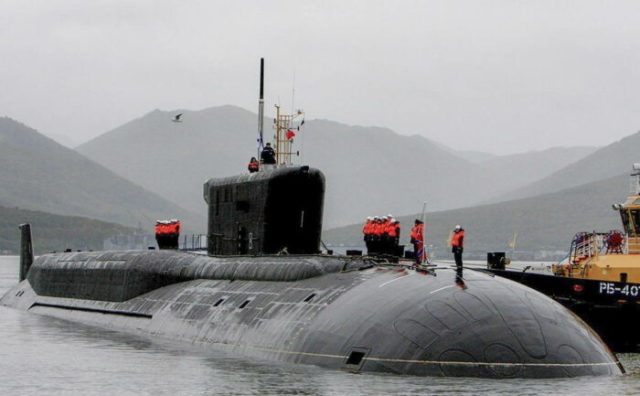
Alexander Nevsky nuclear submarine of the Borey project
Other Regions Frigates are undoubtedly large ships in coastal regions such as the Middle East and North Africa, as well as Central and South America, where both geographically and budget situation requires preference for large investments in smaller vessels. The MENA region, Latin America, and sub-Saharan African Navies (with very few exceptions, such as Brazil) do not operate aircraft carriers, cruisers, or destroyers. Large ships (frigates) make up from two to three percent of the active fleet in these regions. And most of them are ships with a displacement of less than 4,000 tons.
According to AMI estimates, the future of the global market for large surface ships offers additional material for analysis to complement the assessment of these programs (total acquisition costs, including ships and combat systems). Table 2 shows the number of ship classes currently under construction or expected by 2038.
Table 2
Future programs for the construction of large warships by region
Modern the ship market. Navy and Coast Guard ships Aircraft carriers Landing ships Support ships Corvettes Cruisers Destroyers Combat boats Frigates Minesweepers Cor.coast.ohr. Patrol.boats Subv.boats Total Expenses in billion US dollars Asia and Australia 8 73 52 47 6 37 110 147 76 123 287 115 1081 262 Caribbean and Latin.America 12 13 4 3 30 6 36 156 13 263 25 Bl.East and North.Africa 12 15 14 28 28 21 13 198 23 352 39 NATO (without the USA) 1 21 72 23 40 12 46 56 57 113 63 504 200 Europe (without NATO) 3 3 7 10 9 5 17 6 60 10 Russia 8 7 6 27 30 29 15 13 42 177 57 Black Africa 6 1 3 5 29 44 2 USA 3 158 41 38 41 30 128 45 484 351 Total 12 293 204 94 6 118 187 322 197 284 941 307 2945 Expected expenditures in billions of US dollars 60 71 52 19 4 169 9 170 22 42 17 311 946
Here, an analysis of the number of large ships in operation offers several conclusions. Firstly, the Navy is investing in larger ships, and large ships in the next 20 years in many Navies will make up a significant share both in terms of quantity and resources spent. This forecast confirms the already mentioned expansion of the Chinese and Indian Navies, similar trends in Japan and Korea, and the latest contracts for surface warships received in Australia and Canada.
Combining all the numbers completes the picture. Taken together, future aircraft carriers, cruisers, destroyers and frigates will make up about 15 percent of the total number of ships (slightly less than 3,000 ships and boats) to be purchased during this period. By comparison, large ships make up only five percent of the current global fleet.
Purchase costs
Considering financial expenses demonstrates the trend even more clearly. 42 percent of projected spending on all new warships (just over $400 billion in 2018) is focused on carriers, cruisers, destroyers and frigates. And destroyers, although less numerous than the predicted frigates (118 compared to 322), represent approximately the same amount of expenditure of $ 170 billion.
In other words, the profile costs for the purchase of one destroyer of $ 1.5 billion are almost three times higher than the cost of one frigate. AMI currently classifies destroyers as ships with a size of 5,000 to 15,000 tons. They are considered the successors of real large warships, such as battleships and cruisers of the Second World War.
It is interesting to compare with investments in submarines in the same period. Purchases of submarines by 2038 are estimated at just over $ 300 billion (about 307 ships) worldwide, which on average corresponds to just under one billion US dollars per unit. However, this average is misleading, since the PL market (in terms of size and cost) actually represents two markets.
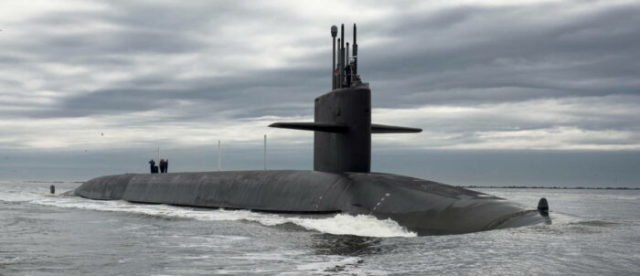
US Navy SSB of the "Ohio" type
The first consists of a relatively small number of large nuclear submarines with an average purchase cost of $1.5 to $2 billion per tactical unit (the United States and Great Britain) and five to seven billion dollars per unit for strategic submarines. At the other end of the market is a submarine with a conventional engine with a displacement of 2,000 to 4,000 tons and an average cost of less than one billion dollars per unit.
Thus, conventional submarines in terms of purchase cost are somewhere between destroyers and frigates in weight and make up an even smaller part of the fleet structure than the large surface warships considered in this article.
24 destroyer programs that AMI tracks are or will be launched in 16 countries. This indicates that the demand for larger and better equipped surface vessels, which should partly be explained by a return to geopolitical rivalry at sea, goes beyond the upper limit of the largest navies that has existed so far. It is noteworthy that about 40 percent of these programs are located in the Asia-Pacific region, including Australia, India, Japan, China, South Korea and Taiwan.
It should be noted that many of the programs classified by AMI as destroyers based on the size of the ship, multipurpose capabilities and other factors, are designated as frigates by the countries building them. This tendency to classify large warships as frigates can be considered a competitive measure for perception management. Efforts to present the construction of frigates – even 5,000-ton frigates – as less expensive or less ambitious projects should be perceived as an element of an acute confrontation for budgetary funds with other types of armed forces, not understanding the political leadership or even with other organizational structures of the Navy.
Despite this political dispute, multi-purpose warships, which have a displacement of more than 5,000 tons, meet the traditional definition of a destroyer. Looking back at the generation of classification of ships that prevailed during the Cold War, even the Dutch Tromp-type frigate (4,300 tons displacement) or the British Broadsword-type (4,000 tons) represented the upper limit of the frigate class. Ships like the Canadian Huron (4,400 tons) and the German Saxony (4,400 tons) and the Sheffield class of the British Navy (4,200 tons) were significantly more destroyers than frigates.
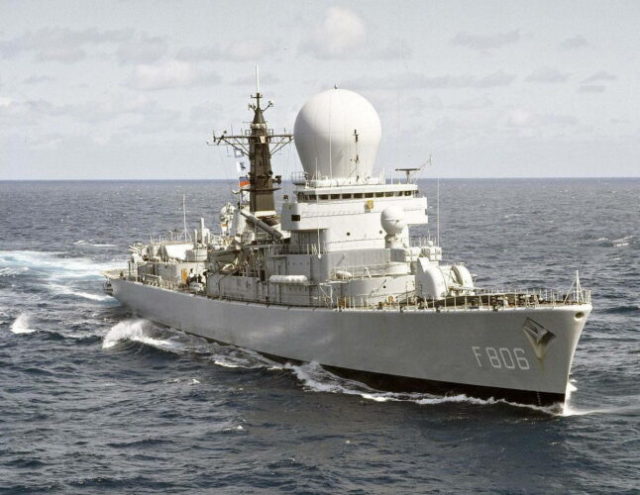
Dutch Tromp-class frigate
Regional aspects
By expanding the regional comparison of programs for large warships through destroyers, the Asia-Pacific region is also becoming a space for aircraft carriers. They are becoming the main part of the fleets of China and India. Moreover, both countries want to introduce at least three aircraft carriers by 2030. South Korea is also suspected of having plans to commission one aircraft carrier during the 2030s.
Although the carriers are not comparable to the 100,000-ton Ford type of the US Navy, new projects in the Asia-Pacific region today are not “mini” aircraft carriers. ru/vms/avianosets-lyaonin-vms-kitaya/" target="_blank" rel="nofollow">The Chinese project is estimated in the range of 60,000 to 80,000 tons, while the new Indian aircraft carrier has a displacement of 40,000 to 60,000 tons.
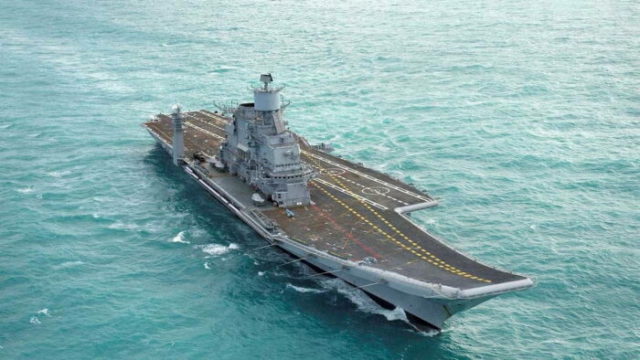
Indian Navy aircraft Carrier Vikramaditya
As for the frigate construction programs, this class of ship shows the biggest differences in terms of size, the number of navies that use them and the presence in certain regions. AMI tracks 53 frigate construction programs from 46 countries. Of these 53 programs, 37 (about 70 percent) have a displacement of 4,000 tons, which is the lower limit of the definition of a large warship given above.
The purchase of frigates in comparison with other categories of large ships is distributed much more evenly across the regions. At the top is the Asia-Pacific region (almost 50 percent of new ships – which is why AMI considers the largest number of countries in this region). Both NATO and the United States have planned projects for large frigates, although in the case of the United States, neither the Coastal Zone combat ship (LCS) nor the planned FFGX type (multi-purpose URO/Multimission frigate-Lenkflugkörper-Fregatten) are large ships in the classical view. Instead, they are designed to fit their class: frigates as ships that support the bulk of the fleet and/or conduct specialized independent operations (for example, mine search and destruction in the case of LCS).
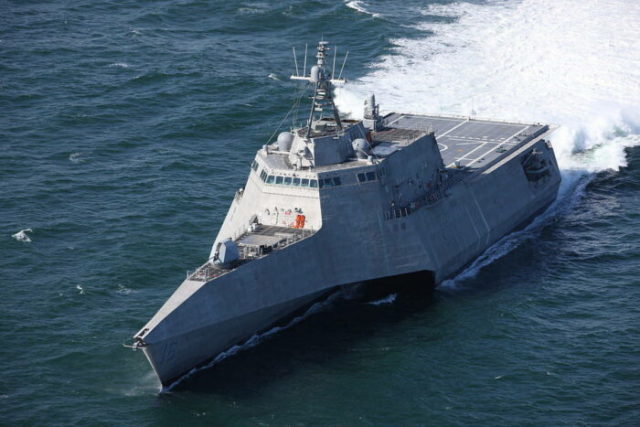
Coastal Zone Ship USS Tulsa
Nevertheless, we also decided to take into account the construction programs of frigates with a displacement of less than 4,000 tons, bearing in mind their relative combat power equal to large ships. Often small frigates represent the largest and most combat-ready surface combat units purchased. An example for this is many countries in the Asia-Pacific region (Bangladesh, Vietnam), many in South America (Chile, Argentina), most of the Middle East and North Africa, as well as Europe (Sweden, Finland, Romania).
And, as already mentioned, the smallest modern multipurpose frigate at average prices of about $ 500 million per unit for most Navies represents a realistic upper limit of feasible purchases, both in terms of budget and combat capabilities.
Final conclusions
This article began with a short review of the origin of the term "Capital Ship / large warship" and states that within 100 years since its introduction, both the dimensions and features of the ships have been adapted. This mixed definition continues into the 21st century. In the current conditions, in which the political and strategic situation is pushing many Navies to acquire large and powerful ships for more severe naval conflicts, it seems appropriate to focus on aircraft carriers and especially destroyers with respect to the term “big ship”.
The growing strength of naval systems (sensors, weapons, communications, electronic warfare and cyber weapons) on board small frigates also give them the opportunity to be considered under the definition of a large ship, based on the prospects of their combat capabilities.
Judged by size or capability, a large warship occupies a significant share as a carrier of concentrated naval capabilities in every Navy. Thus, the construction programs of the largest surface ships continue to attract close attention, and sometimes lead to significant contradictions. So, the shipbuilding and operational foundations of the Navy for more than 100 years since the concept of large warships have changed so much that they no longer leave them the same central place in modern surface fleets. Thus, “capital ship” is a term that remains relevant for assessing current trends in shipbuilding and fleet structure.
Based on the materials of the journal Europäische Sicherheit &Technik
